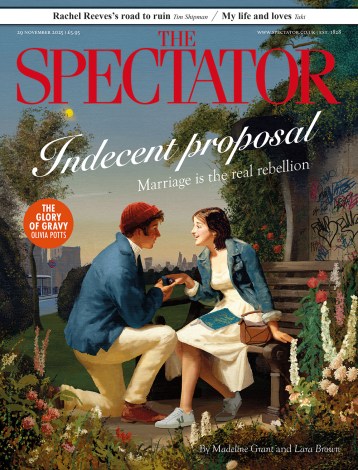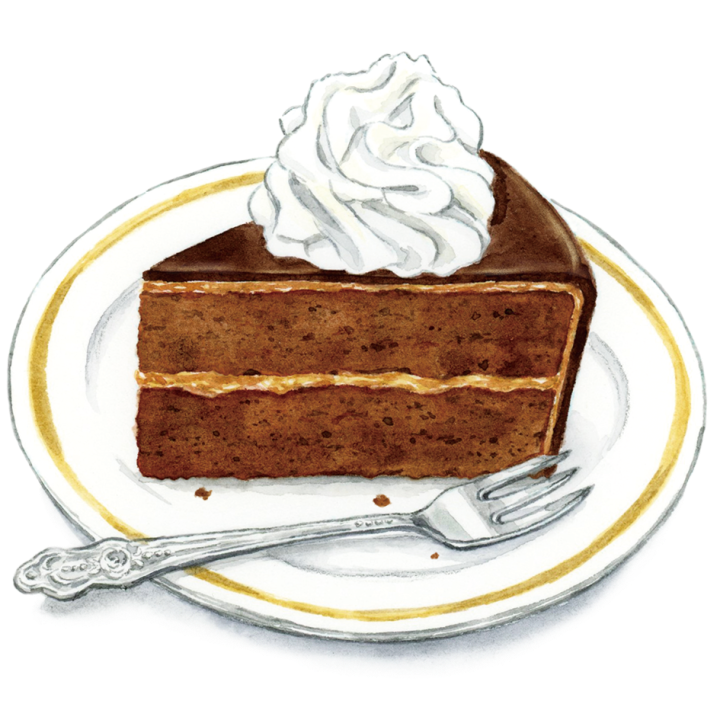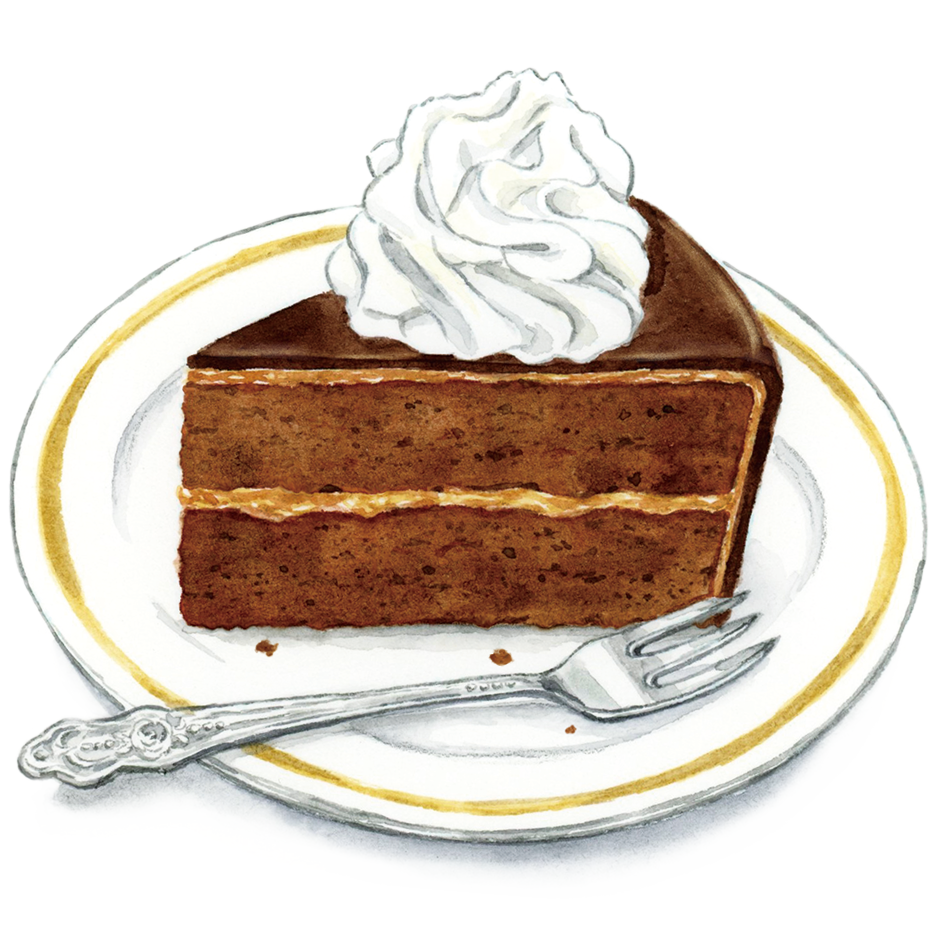
My theory is that sachertorte is a victim of its own success. Over the past 150 years, it has become an Austrian icon and, as such, can be found throughout Vienna. And that’s the problem: its ubiquity means that inferior versions abound. It has developed an unfortunate reputation for being dry, dull, tasteless – a pale imitation of a chocolate cake.
It is often described – even by its supporters – as a ‘grown-up’ chocolate cake or an ‘elegant’ chocolate cake, but I feel like this does it a disservice. Both feel a little like euphemisms for ‘not that nice’, but this couldn’t be further from the truth. It has all the elements required to be a fantastically distinctive and delicious cake: an egg white-leavened chocolate sponge, made with proper dark chocolate and rich with butter and egg yolks, spread with apricot jam and glossily glazed with yet more chocolate. Made with care, it is a balanced blend of dark chocolate, light sponge and honeyed apricot.
The cake was invented by Franz Sacher either in 1832, at the tender age of 16, while he was a kitchen apprentice, or at some point in the 1840s, by which point he owned his own restaurant. Either way, when his son Eduard opened Hotel Sacher, sachertorte was on the menu.
Since then, for more than a hundred years, Vienna’s Hotel Sacher and Demel café, which claims it was sold the rights to the recipe, have battled over the question of ownership and method. In 1963, the Austrian Supreme Court was asked to make the decision: they found that the Hotel Sacher could claim ownership of the cake, but that Demel’s single-layer cake, rather than Sacher’s two-layer cake, was correct.
‘Torte’, incidentally, means ‘a multi-layered cake’. I have been using this as the justification for ignoring the Supreme Court’s findings and sandwiching two layers of sponge together, thereby using even more apricot jam in my cake – but then, in the last five years, Demel has done a volte-face and introduced jam in the centre of its cake, which makes me feel ever more vindicated.
In any event, neither of these sachertorte producers have made their respective recipes public. The Hotel Sacher gives a method for its version of the cake, but caveat it with an all-caps disclaimer: ‘this is only an approximation of the original recipe, which of course must remain a tightly kept secret.’ So some reverse-engineering and detective work is necessary.
Good dark chocolate is the first non-negotiable: it melts better, it tastes better, it creates a far superior ganache. Next: soaking syrup. This is the baker’s most underrated weapon; a simple syrup made up of equal parts sugar and water (add a splash of brandy if you fancy) is painted directly on to the sponge, soaking into it and keeping it moist and plush.
And finally there’s the filling. Apricot jam isn’t just a fixing agent here, as it may be, say, under the marzipan layer of a rich fruit cake. It’s an integral flavour and texture in its own right in this cake. This means two things: first, that you need to be generous in its use, and second, that the better the apricot jam, the better the cake. Spring for the good stuff, the soft, fruit-heavy, perfumed, luscious preserve, rather than an edible glue.
The ganache can feel nerve-racking, as it needs to be poured at precisely the right temperature for it to glide over the cake without just drip-dripping off. That temperature is 32°C, which is cooler than body temperature, but only just. But don’t be deterred, what’s the worst that can happen? If all else fails, the traditional garnish of unsweetened whipped cream hides a multitude of sins.
Serves: 10
Hands-on time: 30 minutes
Cooking time: 40 minutes
For the sponge
- 90g dark chocolate
- 1 tsp vanilla paste
- 90g butter, soft
- 5 eggs
- 150g caster sugar
- 15g cornflour
- 70g plain flour
For the syrup
- 100g caster sugar
- 100g water
For the filling
- 200g apricot jam, sieved
For the ganache
- 200g dark chocolate
- 150g butter
- Line an 8in cake tin with greaseproof paper. Preheat the oven to 160°C/140°C fan.
- To make the sponge, place the chocolate in a heatproof bowl and set over a pan of simmering water until melted, then set aside to cool slightly. Beat together the butter, vanilla and 50g of the sugar until very pale. Add the egg yolks one by one, then stir in the chocolate.
- Whisk the egg whites and the remaining 100g sugar to soft peaks. Fold a good dollop into the cake mixture, then carefully fold in the rest in three goes.
- Sift the flour and cornflour into the mix and gently fold in. Pour the batter into the pan and bake for 40 minutes. Once baked, turn the cake out on to baking paper over a rack. Once cool, slice the cake horizontally into two halves.
- Heat the sugar and the water for the syrup till it boils. Paint the cut sides of the cake with syrup.
- Spoon half of the jam over one sponge. Place the other on top, then smooth a thin layer of jam across the entire top and sides. Refrigerate for two hours.
- For the ganache, heat together the chocolate and butter, stir, transfer to a jug and leave to cool to 32°C.
- Place the cool cake back on the rack with a tray beneath, and pour the ganache over the cake evenly. Leave to set completely (or refrigerate for ten minutes) before removing the cake from the rack and putting it on a serving plate.
To sign up for Olivia Potts’s newsletter, which brings together the best of The Spectator’s food and drink writing, go to www.spectator.co.uk/oliviapotts








Comments